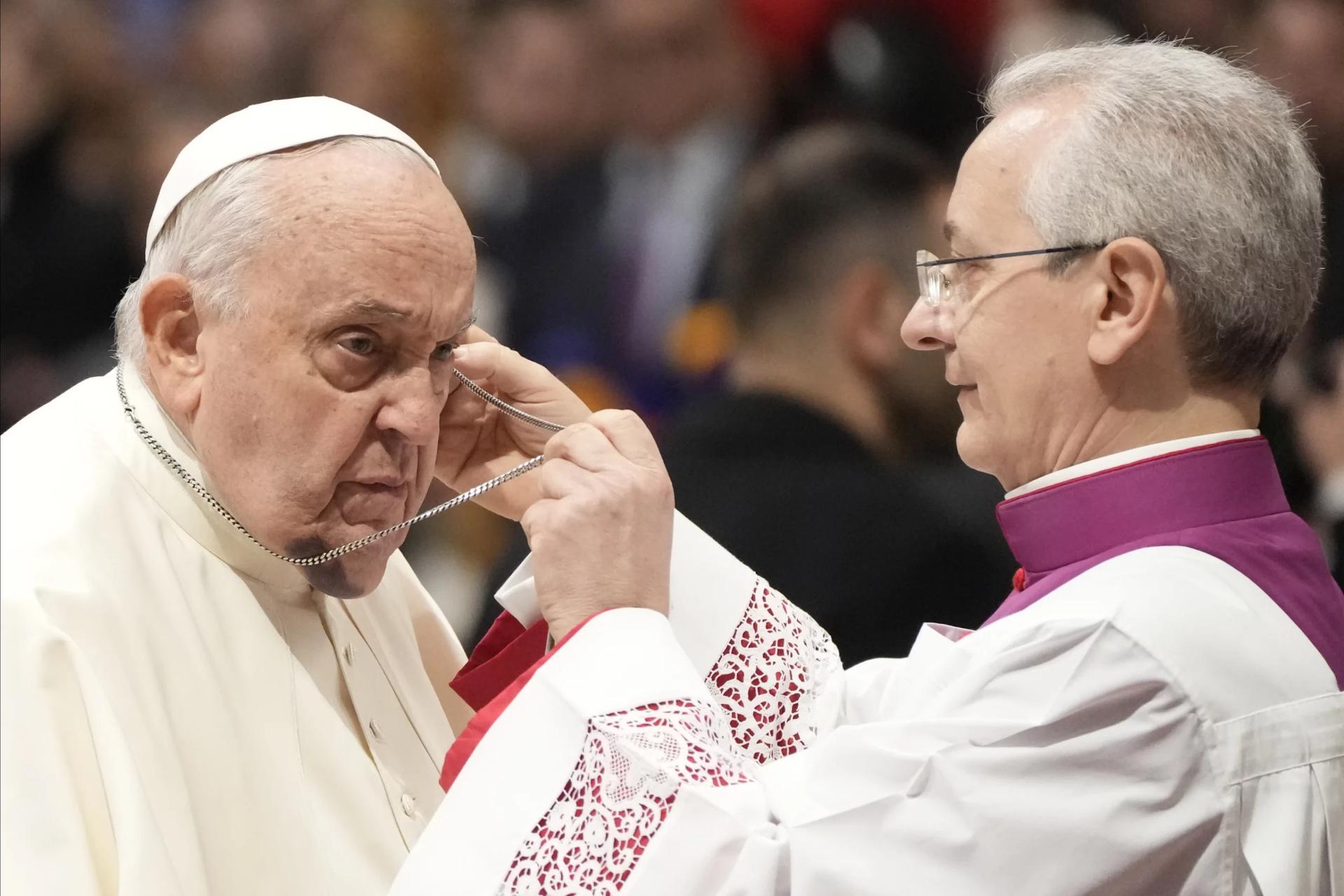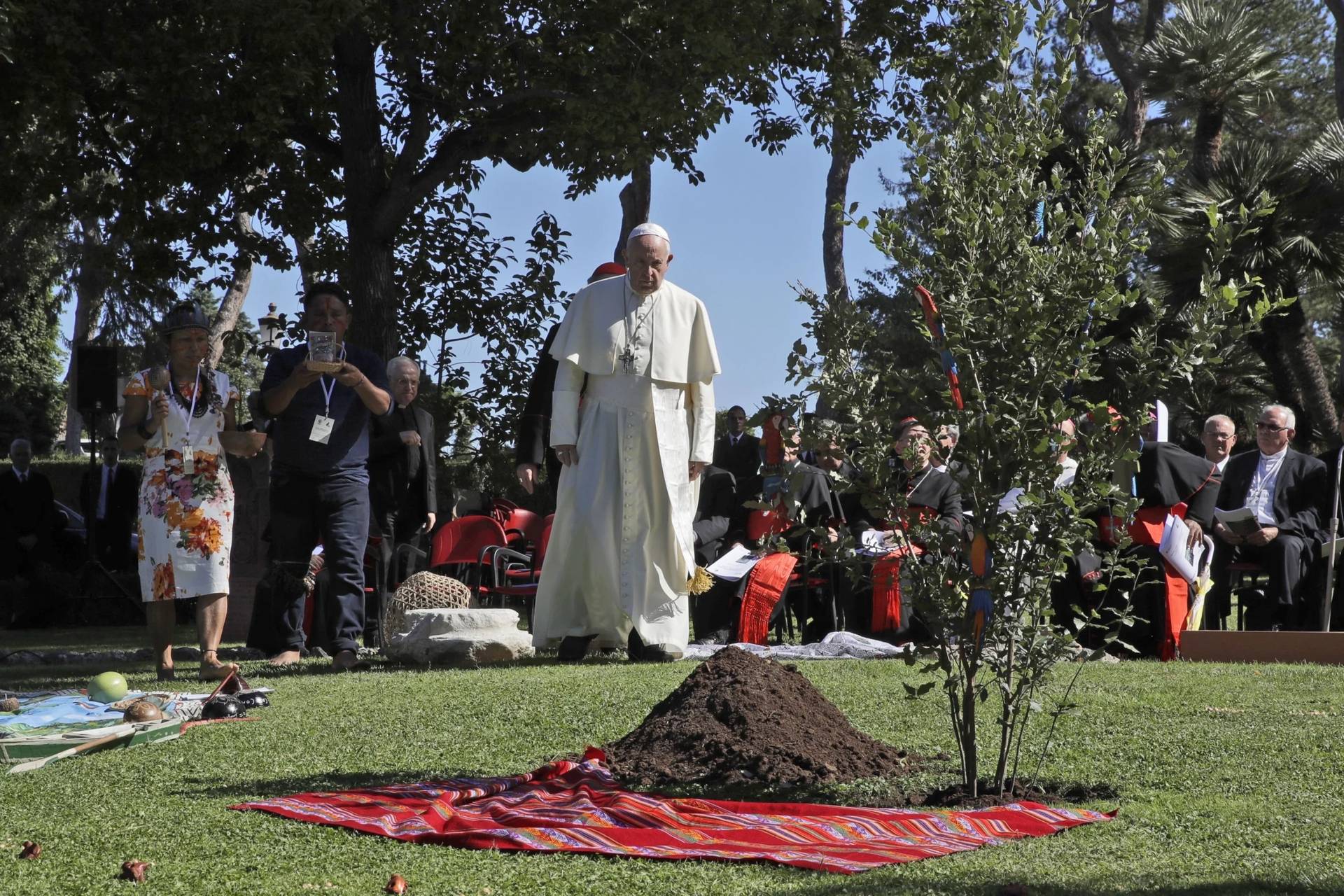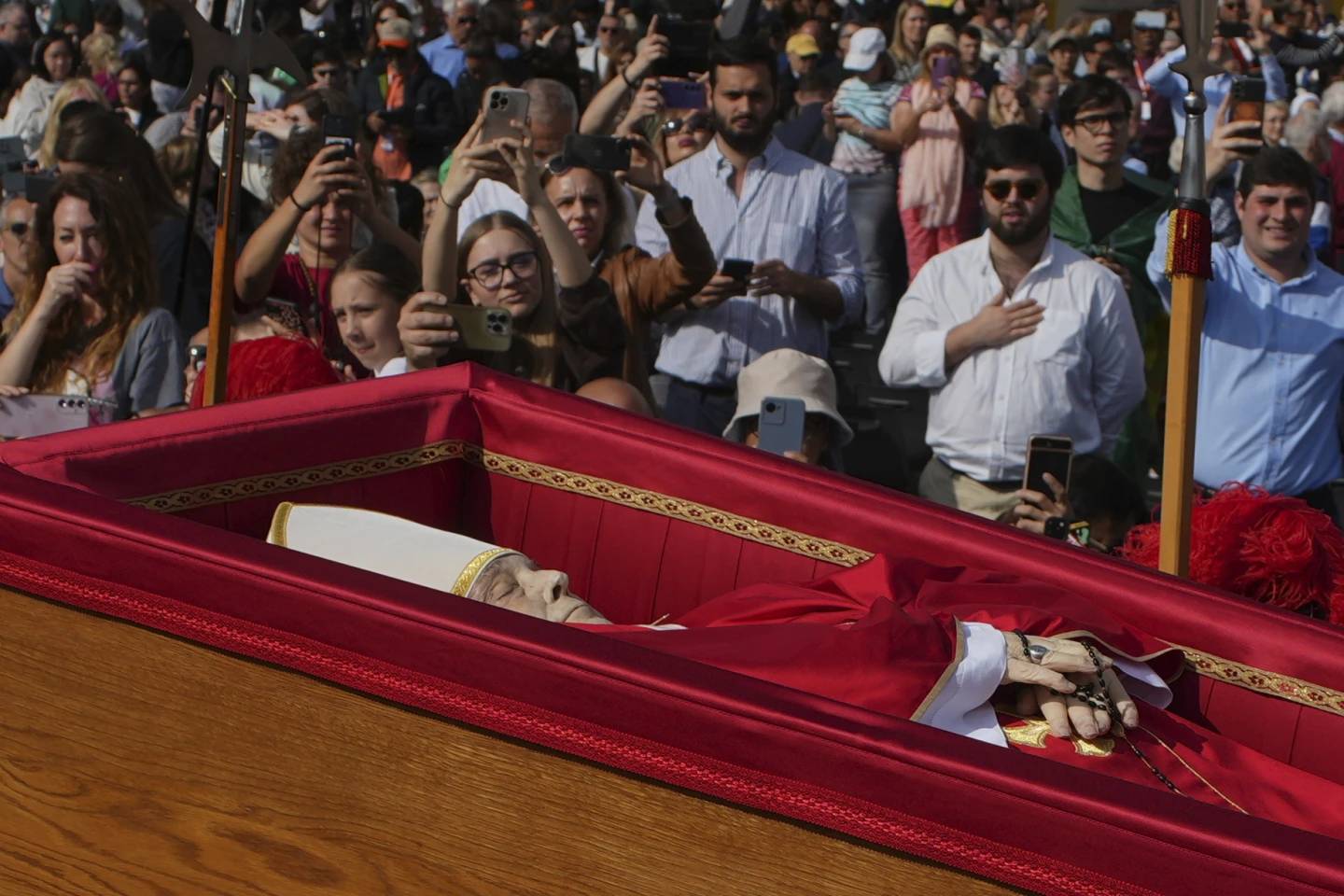Having spent twelve years at the helm of the Catholic Church, Pope Francis was a globally beloved and respected figure, but he also generated more than his fair share of controversy – much of which, thanks to social media, played out visibly in real time.
After an initial “honeymoon phase” following Francis’s election, which he himself predicted wouldn’t last long, slowly a cascade of criticism began to flow in when started his serious decision-making, and it became clear that his papacy would mark a shift from the more conservative tone of his two immediate predecessors.
As the church and the world reflect on the legacy and impact of his papacy, here’s a look at what are arguably the most controversial decisions he made.
Political Advocacy
Francis’s clear decision to get involved in what are conventionally seen as political debates, from economics to migration policy – and, of course, which side he’s taken – was a source of debate nearly from the beginning.
Early on, this debate focused on his advocacy for the poor and his routine criticism of the capitalist system and “trickle-down” economics, gaining him a reputation among some as a Marxist. His criticism of free-market economics also led to pushback especially from right-wing American Catholics; famously, a conservative American radio media personality accused Francis of espousing “pure Marxism” in 2013.
These allegations were further cemented when Francis received a crucifix shaped like a hammer and sickle, the traditional communist symbol, from Bolivian President Evo Morales during a 2015 visit to South America, and when a few months later he met with Fidel Castro during a brief stopover in Cuba in September of that year.
Yet Francis consistently denied these accusations, arguing that he was merely promoting Gospel values and the social doctrine of the Catholic Church.
His views on immigration, climate change and the environment were among the most controversial of his papacy.
When the pope published his encyclical on the environment Laudato Si in 2015, it was immediately met with a wave of backlash from critics who argued that climate change was a myth, certainly not something caused by humanity, as the pope had argued, and was a issue the church had no business engaging with.
Papal critics shot back at the science of the document, calling it a sham, and again took issue with his criticism of the global market system.
Pope Francis’s repeated advocacy for an open-door policy for migrants and refugees within Europe and beyond also met resistance, not only from citizens who view the high migrant influx as a problem, but also from rightwing populist politicians who hold a much different view on the matter.
Over the years, Pope Francis butted heads with several politicians on the issue, including Italian politician Matteo Salvini, Italy’s former minister of the interior, Hungarian Prime Minister Viktor Orban, whom the pope is expected to meet during his visit to Hungary in April, and more recently, United States President Donald Trump for his mass deportation plans.
Amoris Laetitia
Perhaps no other moment, no other decision, in Pope Francis’s entire reign caused as much blowback as his 2016 post-synodal exhortation, Amoris Laetitia, or the “Joy of Love,” which is based on the conclusions of a 2014-2015 Synod of Bishops on the Family.
The uproar was not so much over the document itself, but rather focused on footnote 351 of chapter eight, in which the pope opened a cautious door for divorced and remarried couples to receive communion on a case-by-case basis.
The footnote comes in paragraph 305 of the document, in a section on wounded families and families living in irregular situations, which says that “a pastor cannot feel that it is enough simply to apply moral laws to those living in ‘irregular’ situations, as if they were stones to throw at people’s lives.”
Due to mitigating factors, the pope said it is possible people living in “an objective state of sin” can still be living in God’s grace and can grow in this grace with the church’s help.
At this point, the pope included the now infamous footnote 351, in which he said, in terms of help from the church, “In certain cases, this can include the help of the sacraments.”
Francis went on in the footnote to remind priests that “the confessional must not be a torture chamber, but rather an encounter with the Lord’s mercy…I would also point out that the Eucharist is not a prize for the perfect, but a powerful medicine and nourishment for the weak.”
Access to communion for divorced and remarried couples was one of the most hotly contested issues during the Synods of Bishops on the Family, with many arguing that to allow this would violate official church teaching and imply a shift in the Catholic view on marriage.
Pope Francis’s position, however, was that not every couple is the same, and that no situation is black and white, so church teaching as is allows space for pastors to be close to these couples and to conduct a proper discernment with them on if and when access to communion could be granted.
In the wake of Amoris Laetitia, many national bishops’ conferences issued guidelines for its application that included providing communion to remarried divorcees on a case-by-case basis, which in turn caused even greater backlash against Pope Francis for having opened the door.
The debate was so fierce that four prominent conservative cardinals, including American Cardinal Raymond Burke, penned five dubia, or doubts, to Pope Francis about the validity of footnote 351 in view of church teaching, however, without receiving a response, they published the dubia in conservative Catholic media outlets, causing further outcry and becoming a point of reference in the debate for several years.
In many ways, this was the crossing of the Rubicon of the Francis papacy, the moment which sealed the divisions between the pope and his critics.
Up until that point, conservative Catholics felt that they could still defend the pope and, while disagreeing with some of his decisions, could still claim him as their own. After Amoris, many conservatives came away feeling stunned, betrayed, and confirmed in their opposition to the direction of Francis’s papacy.
As an aside, Francis also used this logic when it cae to the debate over allowing pro-choice politicians to receive communion, arguing that the Eucharist cannot be turned into a political weapon, and urging bishops who have pro-choice politicians in their congregations to approach the issue as pastors, rather than police.
Amazon Synod/“Pachamama”
Another clear moment of controversy for Francis happened during his 2019 Synod of Bishops on the Amazon, with debate exploding over Indigenous spirituality and what papal critics perceived was the his open embrace of pagan worship.
The most visible symbol of this debate was the now infamous statue of the Pachamama, an Indigenous goddess of fertility and mother earth, frequently depicted as a naked Indigenous woman kneeling and embracing her pregnant stomach.
Much of the debate began after a symbolic prayer liturgy in the Vatican gardens opening the synod, which was allegedly supposed to incorporate elements of Indigenous culture and showcase the enculturation of Indigenous spirituality within Catholic liturgy.
However, critics argued that far from an expression of authentic Catholic worship, the liturgy was more akin to a pagan ritual and idol worship, as many objects of cultural and spiritual significance for Amazonian indigenous, including statues of the Pachamama, were featured prominently.
Pope Francis on that occasion opted not to recite his prepared speech but asked participants to join him in praying the Our Father instead. The Vatican gave no explanation for that decision, but it was simply said he preferred to have a moment of prayer.
At one point during the synod, controversy became so fierce that a statue of the Pachamama was stolen from the Roman parish near the Vatican where it had been displayed along with other objects of relevance to the synod and tossed into the Tiber River, prompting Pope Francis to issue an apology and to ask forgiveness from anyone who was offended, saying the statues had been displayed “without idolatrous intentions.”
Due to the Pachamama and debates about other hot-button issues such as priestly celibacy and women deacons, the Amazon synod was among the most controversial events of Francis’s papacy, reviving debates not only on pagan worship, women’s ordination, and the married priesthood, but also internal divisions over the Catholic liturgy and the proper interpretation of the Second Vatican Council, given the synod’s emphasis on the enculturation of the faith.
Traditional Latin Mass
One papal decision that continues to cause waves throughout global Catholicism is Pope Francis’s decision in 2021 to restrict access to the Traditional Latin Mass.
With his motu proprio on the liturgy Traditionis Custodes, meaning “Guardians of Tradition,” Francis reversed his predecessor Benedict XVI’s liberalization of access to using the Roman Liturgy prior to the Second Vatican Council reforms on grounds that he was preserving church unity.
Among other things, the new norms stipulated that priests already celebrating the Latin Mass would need to get permission from their bishop to continue doing so. Any priest ordained after the issuance of the new norms who wished to celebrate the Traditional Latin Mass were required to submit a formal request to their bishop, and the bishop in turn was asked to consult with the Vatican before granting permission.
Francis also charged bishops with determining specific times and locations where the Latin Mass can be celebrated and forbid the establishment of new parishes dedicated to the Traditional Latin Mass as well as the inclusion of the traditional liturgy on the regular parish Mass schedule.
That decision was immediately met with enormous backlash, with critics calling the pope “cruel” and saying they felt misunderstood and mistreated, while supporters of the move hailed it as a difficult but necessary step in preventing further divisions from taking root in local communities, and in the church as a whole.
Francis fanned the flames further when he later issued a new decree limiting a bishops’ ability to grant dispensations from Traditionis Custodes, ensuring that a bishop is not able to grant those dispensations on his own authority, but only after having consulted with the Vatican.
Given the popularity of the Traditional Latin Mass among certain church circles and its association with a rejection of the reforms of the Second Vatican Council by some, the topic was a sensitive one for Francis and each of his immediate predecessors, and his decision to restrict access to the traditional liturgy will likely remain one of the most controversial aspects of his legacy.
Fiducia Supplicans
What was perhaps Pope Francis’s most controversial decision came toward the end of his papacy, when in December 2023 he authorized the publication of a declaration from the Vatican’s Dicastery for the Doctrine of the Faith (DDF) outlining the methods for giving blessings to couples in same-sex unions.
In the declaration, Fiducia Supplicans, it was said that it was not only permitted, but encouraged, for pastors to provide a pastoral blessing to individuals in a same-sex union, as long as it was not in any way confused with the church’s sacrament of marriage, and did not take place as part of a ceremony or inside of a church or chapel.
Despite great efforts to explain the nuances of the document, it caused a wave of backlash and confusion, including a subsequent statement from the Symposium of Episcopal Conferences of Africa and Madagascar saying they had not been consulted about the document prior, but that after conversations with the DDF would not implement the legislation at all due to cultural difficulties.
Argentinian Cardinal Víctor Manuel Fernández, head of the DDF, less than a month later published a press release attempting to explain the decision further, and outlined circumstances in which these blessings were appropriate, as well as potential formulas emphasizing spontaneity, and prayers for the individuals’ path of faith, rather than their relationship.
The move divided Catholics over whether the document signaled a new milestone for a church of welcome and inclusion or opened the door for misunderstanding and a potential breach in church teaching.
Without changing doctrine, the document essentially officialized common church practice in many places while also attempting to make limits on these blessings clear.
It remains one of the most complex, confusing and controversial decisions of Pope Francis’s papacy, and will undoubtedly be a significant aspect of his legacy, though whether it was a stain, or a shining point, will in all likelihood be part of the enduring debate about this decision through history.
Frociaggine
Perhaps one of the least covered but most significant of Pope Francis’s controversies was his use of a crude slang term in referring to homosexuals during a May 20, 2024, session with Italian bishops.
Francis was in the Vatican’s synod hall to address the spring plenary assembly of the Italian Episcopal Conference (known by the acronym CEI), with roughly 230 bishops present, along with other clergy and supporting staff, meaning this wasn’t simply a casual conversation among friends.
One of the topics that arose during that technically private conversation, though it was always obvious this bit would come out, was the question of the admission of homosexual men to Catholic seminaries. Soon afterwards, rumors began to circulate that Francis had used an off-color term in the context of the discussion, saying there’s already too much frociaggine in seminaries, which translates roughly to “faggotry.”
Some argued that since Italian is not the pope’s mother tongue, he may not have understood that the term in question is offensive, especially given his reputation as the pope of “Who am I to judge?”
Francis built a reputation for being LGBTQ+-friendly, so media at the time took the position that he must have used the term almost accidentally, without intending to shock or offend.
The flurry of immediate backlash from the comment prompted a Vatican spokesman to put out a statement apologizing, saying the pope “never intended to offend or express himself in homophobic terms, and he apologizes to those who felt offended by the use of a term, as reported by others.”
In a May 28 statement, Vatican spokesman Matteo Bruni said, “Pope Francis is aware of the articles published recently about a conversation, behind closed doors, with the bishops of CEI,” referring to the Italian Episcopal Conference.
The spokesman reiterated previous statements from Francis that “in the Church there is space for everyone, for everyone! No one is useless, no one is superfluous, there is space for all. Just as we are, everyone.”
That would have smoothed things over, except that Pope Francis used the term again a month later, in a June 2024 meeting with priests in the Pontifical Salesian University in Rome. The Italian news service ANSA reported that on that occasion, Francis said “In Vaticano c’è aria di frociaggine” – meaning “In the Vatican, there is an air of faggotry.”
He did add that gay men can be “good boys,” but that they shouldn’t be allowed into seminaries.
That tie around, the comment didn’t generate anything like the same attention, for the simple reason that by then, it was intentional, and it contradicted the narrative from the first go-around that the pope did not know what he was saying.
The fact is, Francis knew full well what the term signified, and choosing to employ it a second time in public proved it wasn’t an accident.
What Francis demonstrated in the frocaggine fiasco is that despite his insistence on the need to be more welcoming toward members of the LBGTQ+ community, he clearly believed there was an unhealthy gay element to clerical culture, and thought it was important enough to speak out about.
A version of this article was published on March 8, 2023, under the title, “Looking back after a decade, Top 5 Papal Controversies.”











